SIRUI Sniper Review – Budget-Friendly, Fast Autofocus Lenses with Reasonable Optical Quality
Restriction-free music courtesy of Epidemic Sound. Sign up here: Epidemic
The SIRUI Sniper series of autofocus lenses has just been released on Indiegogo and we took them for a short spin. How do these new lenses behave in the field? How do they perform in our chart tests? Interested in learning more about SIRUI’s first autofocus lenses? Then keep on reading.
SIRUI is a Chinese lens manufacturer that has pledged to introduce a variety of lenses, whether spherical or anamorphic, to the market at an affordable price. Let me emphasize that these are not rental items. These are all meant for the new breed of creators, be it for the ‘net’ or ‘set’, who are seeking to have their own affordable equipment. In my opinion, SIRUI is doing very well in selling the “dream of endless image possibilities”, especially when it comes to their anamorphic lenses. As far as I recall, they were the first company to introduce budget-friendly anamorphic lenses that previously took this niche market by storm.
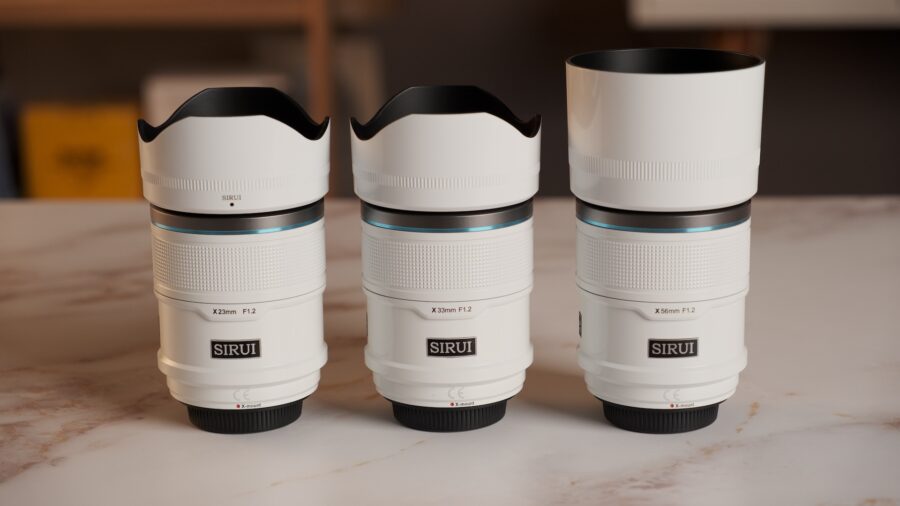
SIRUI current line of lenses
Fast forward to today’s offering, and it seems as if SIRUI is moving forward in three directions with its optical endeavor:
- Creating small lightweight anamorphic lenses (Keep an eye on the Saturn. Additional lenses have already been teased and we will have a full review of the new upcoming 50mm and 75mm on November 27th).
- The Nightwalker: These “Cine lenses” were launched successfully a while back and SIRUI already mentioned their plan to grow and support this line with two additional focal length lenses. (See our review here).
- The Sniper line: These new APS-C/S35 autofocus lenses are SIRUI’s first attempt to enter the ever-growing lens market by offering a choice of three mounts (Nikon Z, FUJIFILM X, and Sony E), next to three lengths, 23mm, 33mm, and 56mm. As a side note, the company already confirmed that they are working on two additional focal lengths, 16mm and 75mm. Our sources are telling us that the 16mm in particular will have very little vignetting. We will keep you guys updated with further information when it becomes available.
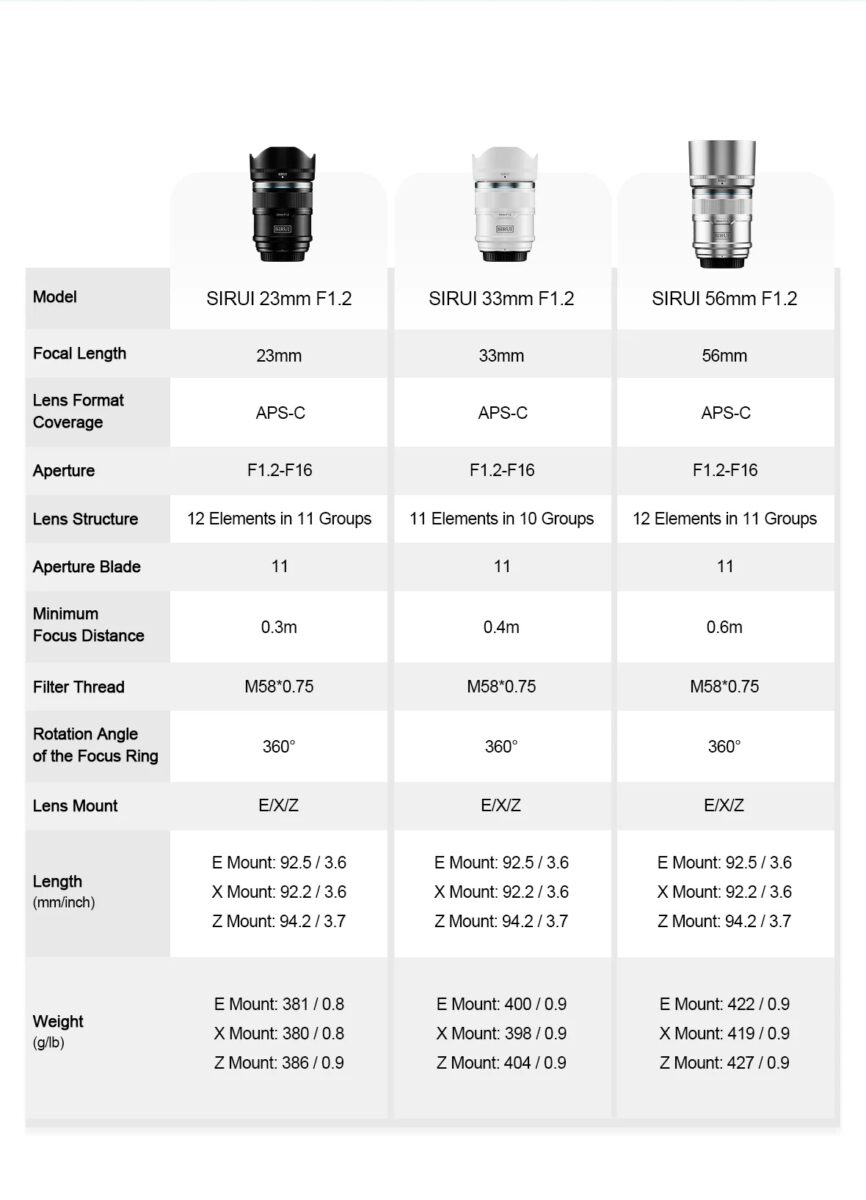
SIRUI Sniper specs
SIRUI did its best to unify the lens specs across the line. All three lenses have an f/1.2 fast aperture, a similar weight of around 380g, and a 58mm inner diameter leans thread. By the way, we have been asked by some of you for the lens’s outer diameter but we could not get the information, simply because attaching a matte box (for example) is not really possible due to the very thin outer barrel. (I worked with the new H & Y variable lenses and found them easy and useful to work with).
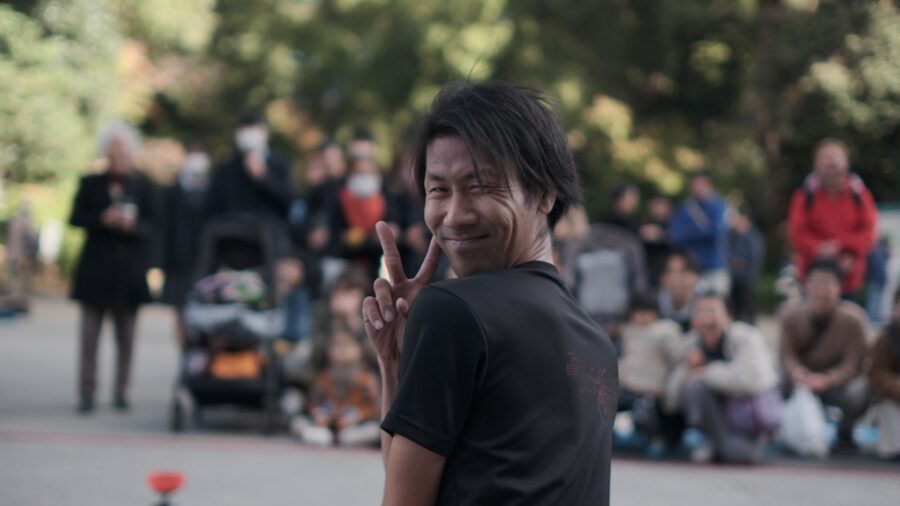
When it comes to color coating, the new lenses will be available in black, white, and metallic aluminum.
OK, enough talk about “cosmetics”. You might wonder how these lenses perform on our chart. Well, as a rule of thumb, the more open these lenses are, the softer they get, and not only at the edges but in the middle, too. This is not surprising at all, especially when considering their aggressive price point. If you want to make sure that your images are sharp, consider f/4 as your starting point (f/2.8 will do as well but by sacrificing a bit of sharpness in the middle). This observation holds true for the entire set.
SIRUI Sniper 23mm
I gathered some images below that my colleague Florian took showcasing the lens with a resolution chart.
First, let’s see how sharp this lens is (just to back up what I wrote above).
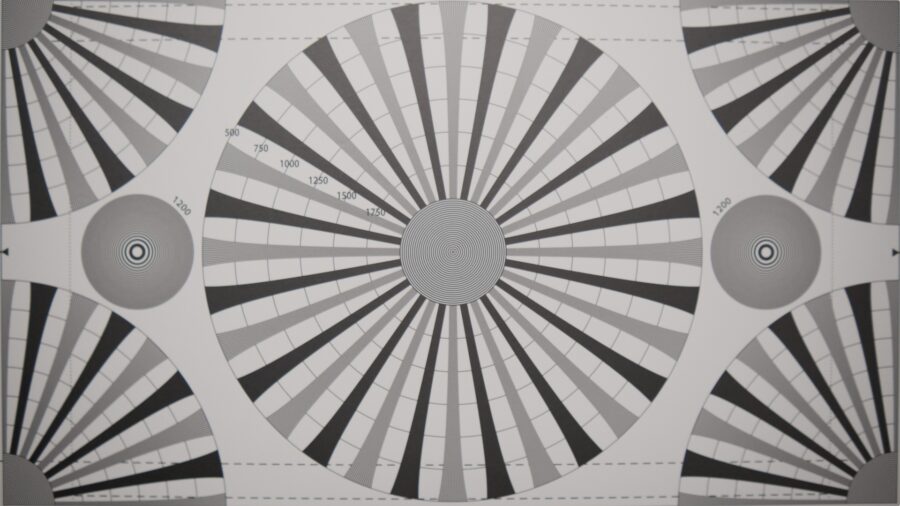
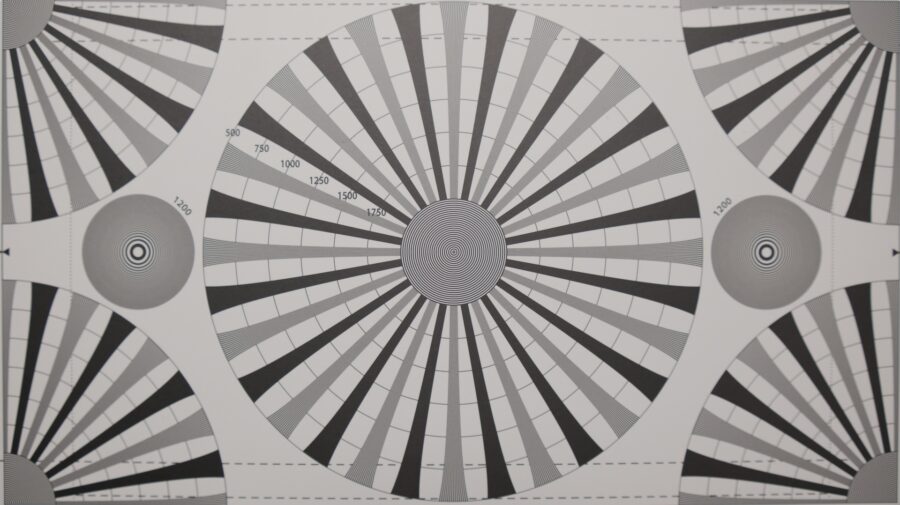
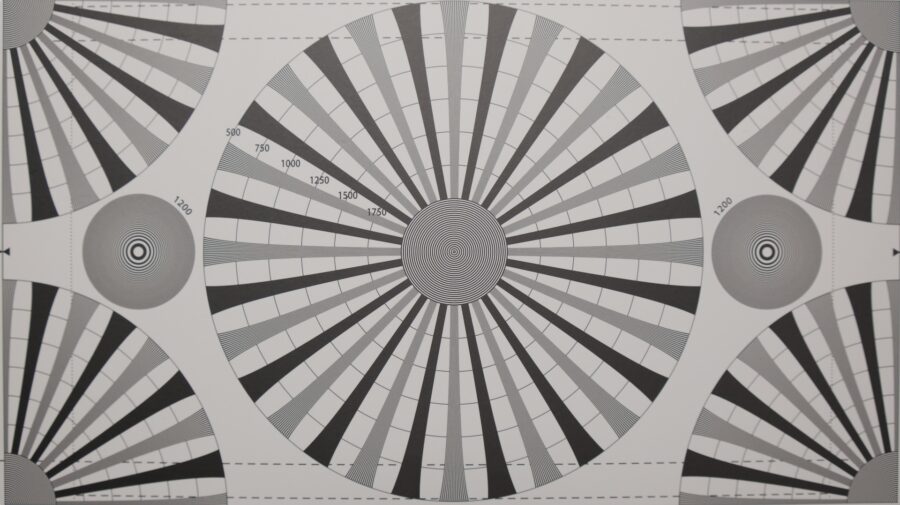
Now, let’s see how the lens renders out-of-focus points of light, or what we call “bokeh”. As you can see, the bokeh is not unified across the image. What starts as a circle in the middle ends up as a leaf shape on both edges.
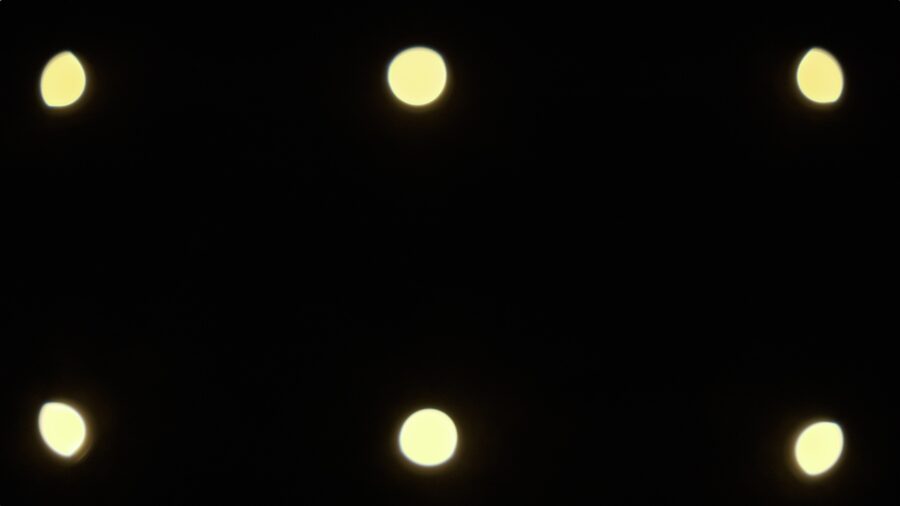
SIRUI Sniper 23mm Bokeh. Image: CineD
SIRUI Sniper 33mm
From an optical standpoint, this lens may slightly outperform the other two, but in practice, it’s the one I’ve used the least. For filming, the 23mm (currently the widest in this family of lenses) and the 56mm (the strongest tele of the trio) were my “workhorses”.
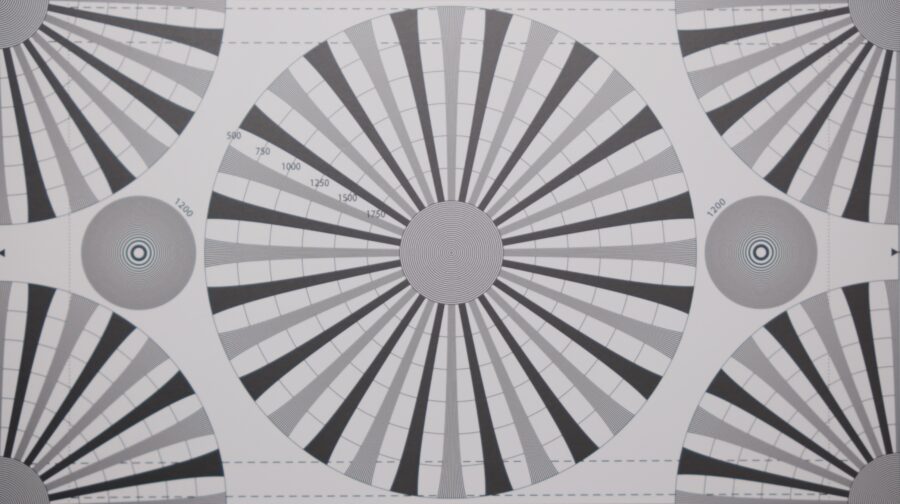
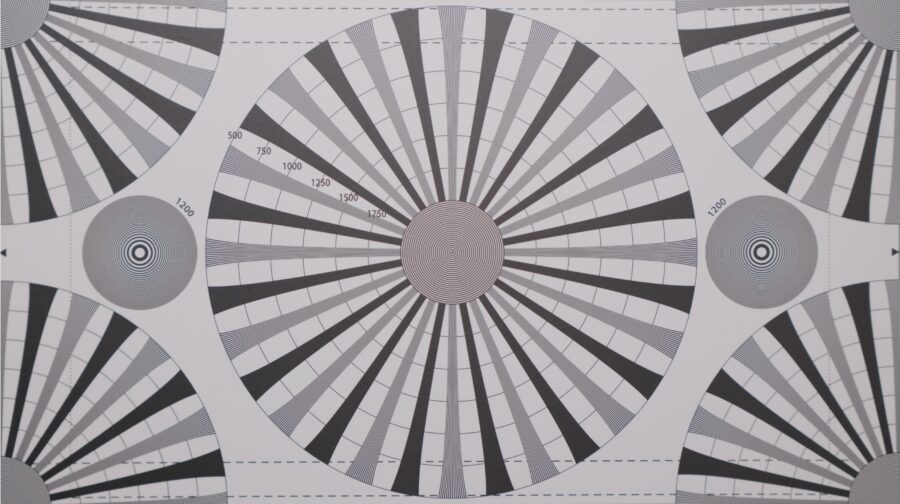
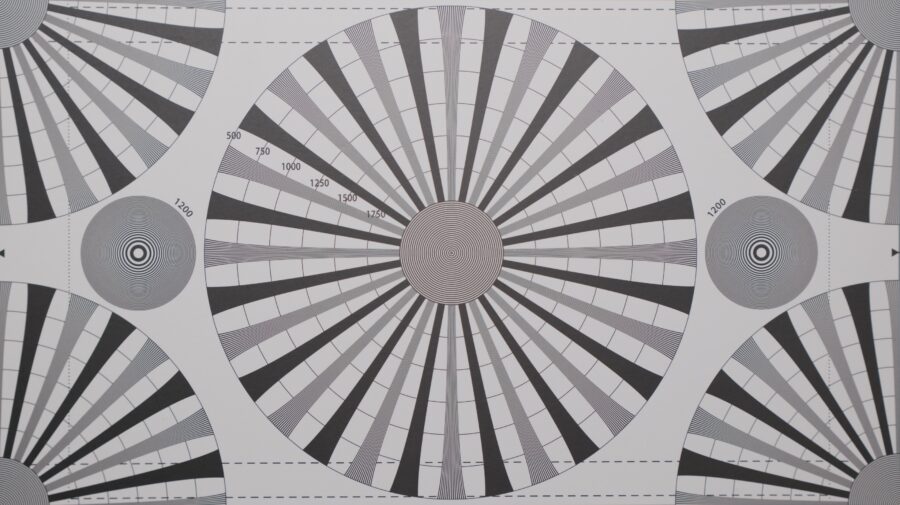
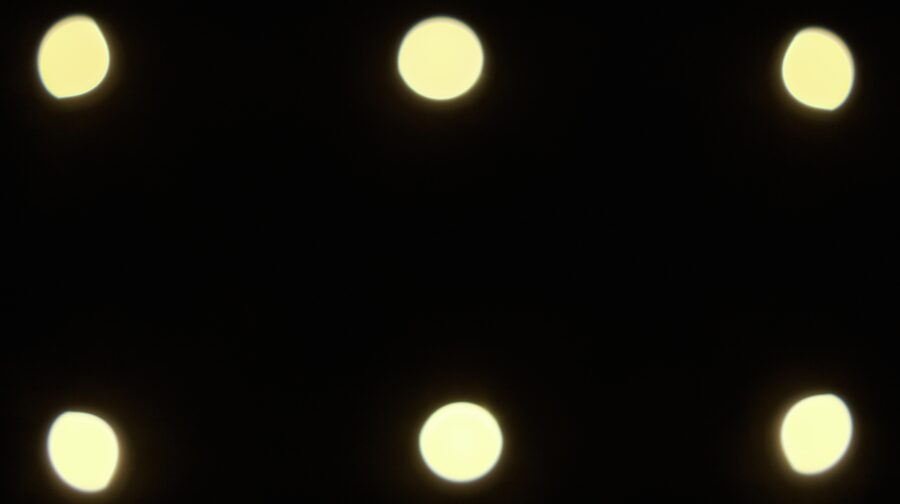
SIRUI Sniper 56mm
Funnily enough, this is the lens I used most while filming, simply because it allowed me to get closer to (the friendly) people out there. The bokeh test below clearly shows what I had suspected – the 56mm has some sort of “halation effect” to it. (All three lenses have it, but it comes out strongest on this lens in particular). At times, when working with a wide-open aperture, it felt like I was filming with a “built-in” 1/8 Pro Mist on the lens. I’ll come back to this phenomenon a bit down the road, but first, let’s look at this 56mm lens against our resolution chart:
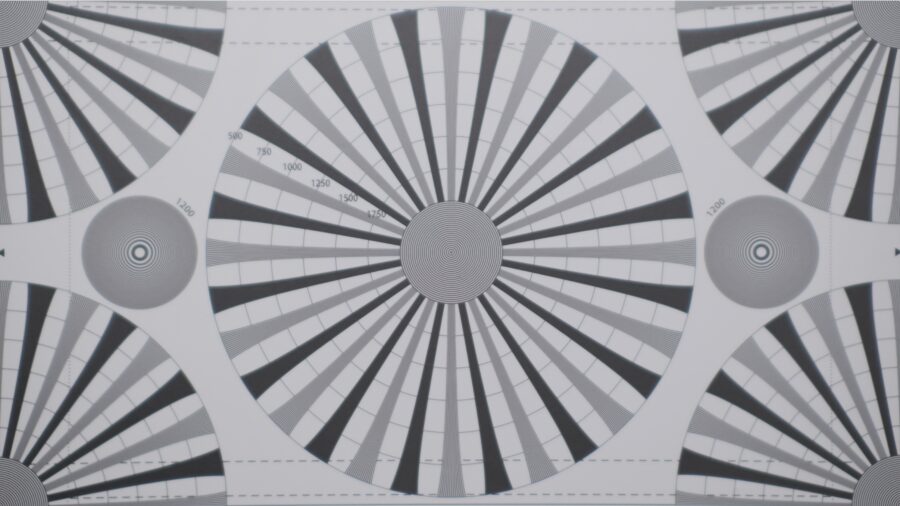
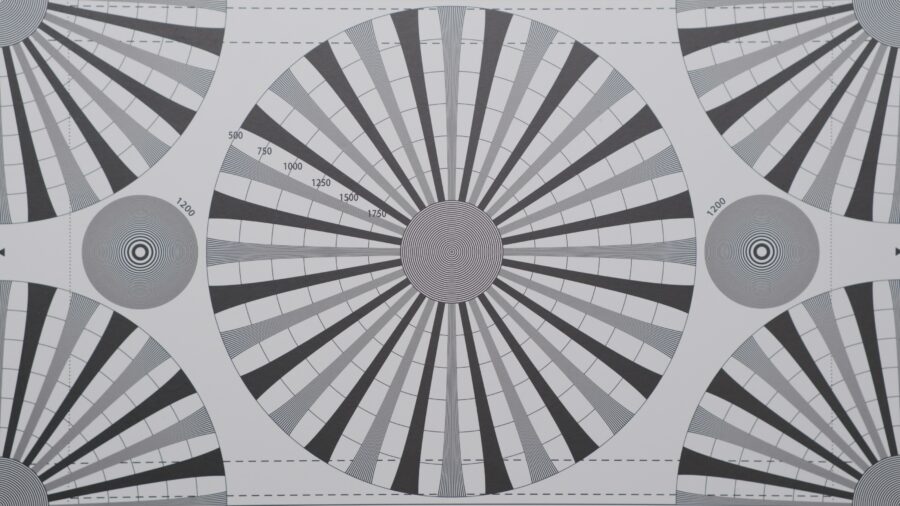
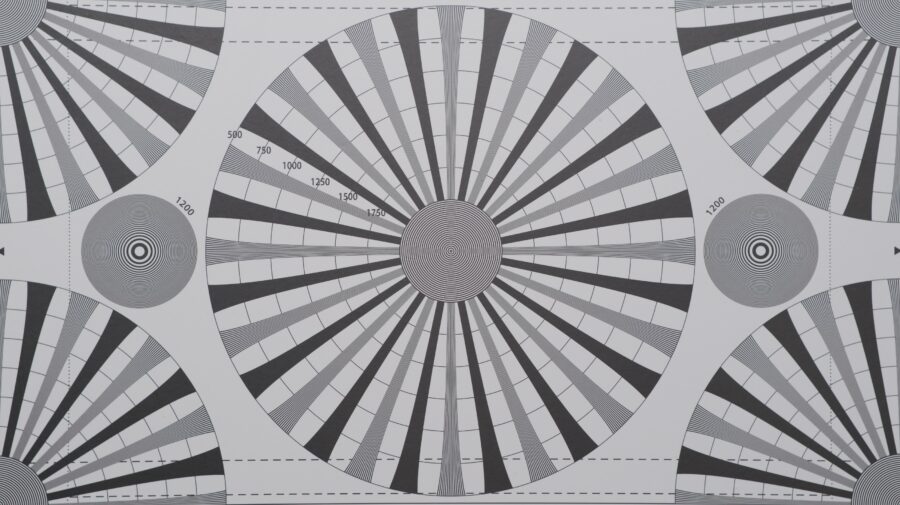
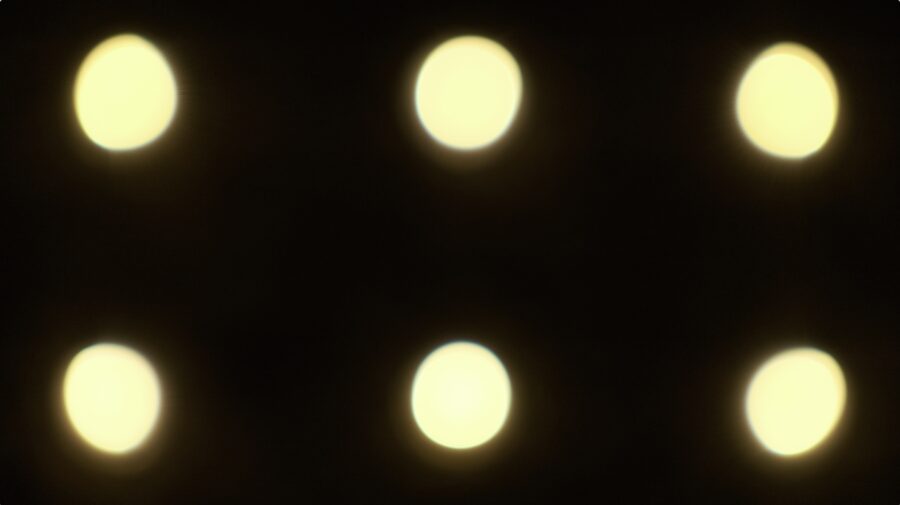
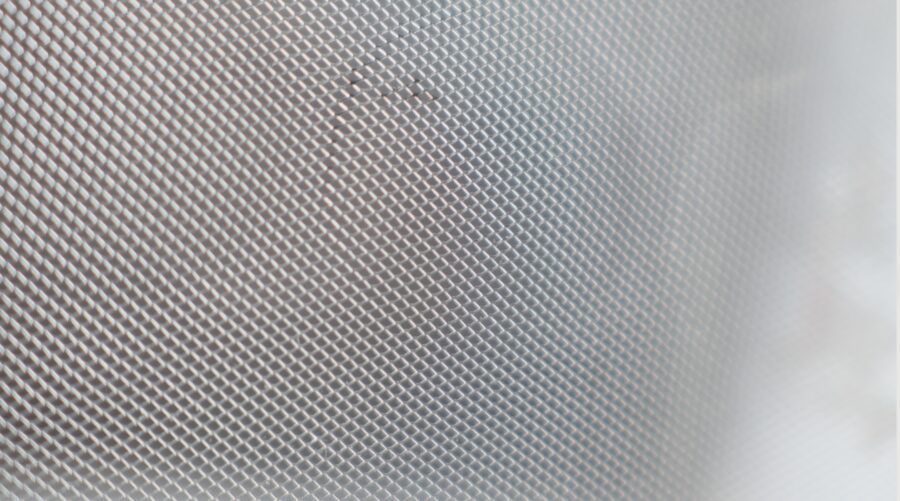
As you can see in the above image, color fringing and unwanted color shifting on the edge of objects are very noticeable in some lighting conditions. The same goes for the 23mm and 33mm lenses.
On a positive note
I may have sounded a bit harsh so far, so to sweeten the pill a bit, let me say that the focus breathing is very well controlled. Also, the build quality seems to be very decent, and last but not least, the image that comes out of these lenses reminds me almost “one-to-one” of what I saw and felt when working with the SIRUI Nightwalker. I would not be surprised if both SIRUI’s Sniper and Nightwalker share the same lens elements. It also makes sense when the manufacturer wants to be cost-effective.
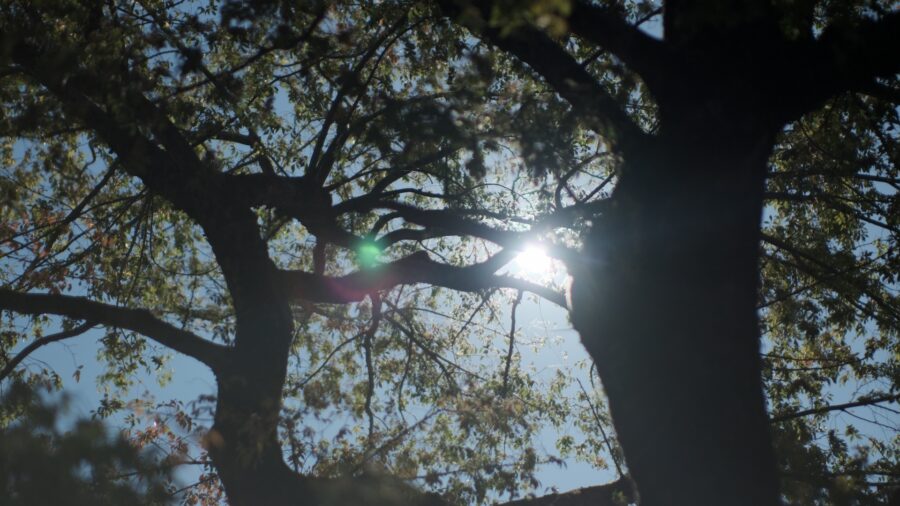
In the field
Evaluating a lens based on charts and similar metrics can be somewhat deceptive. Although I can’t argue that the lens quality is far from perfect, it’s still easy to appreciate the images produced by these lenses. If you are wondering “How can that be?”, well, the answer is very simple. At times, optical perfection equals a “lack of (image) identity”. And believe me, I’ve seen it over and over again with lens manufacturers who are aiming for the top by trying to make the sharpest possible lens and more. I’m not suggesting that using cola bottle glass will create “image identity,” but in this specific case, many of the obstacles I listed above contribute to crafting a distinct image. Also, depending on your personal taste or artistic needs, isolating your main object from its background is very easy thanks to the fast f1.2 aperture. (Don’t forget to use a strong ND filter to help you with that)…
OK, lots of words so far, but what about the autofocus performance of these new lenses? Well, it is a bit of a mixed bag.

Sniper autofocus performance
Before I continue to share my experience, I need to highlight that for this review, I was working with a FUJIFILM X-H2 camera. I’m pointing this out because I do not know if the autofocus works well with any of the Sony E or Nikon Z cameras. Even more so if you are a FUJIFILM user and are considering purchasing these lenses – make sure that the camera you are using is listed by SIRUI as qualified. For example, I tried working with the FUJIFILM X-S20, but the camera and lens did not communicate well at all. The result was that the autofocus was constantly searching. (To be fair, this camera is not yet on SIRUI’s list). I reached out to the company and SIRUI said they are working hard to expand the list of compatible filming devices. By the way, if you’re wondering whether the lens can receive future firmware updates then the answer is yes! This can be done via the USB-C connector found on the lens body itself.
Most of the time the Sniper lenses worked OK with the FUJIFILM X-H2. Sometimes the lens decided to “take a break” and didn’t quite cooperate with my desire to focus on a specific point, but overall, it was OK. Even the focus changes between two objects were executed nicely and without any noticeable focus breathing! I also liked the ability to get rather close to an object and still be able to focus on it (especially with the 23mm lens).

However, the electronic communication between the camera and lenses is not only for autofocus, and this is where the Sniper lenses tend to fall short. Modern mirrorless cameras are small and perfect for street photography/filming. Top this with the ability to engage the camera’s in-body image stabilization system (IBIS) and here you have a great run-and-gun device that, in theory, should work with non-stabilized lenses, too. I wish that this was the case with the Snipers. Even after dialing the correct focal length in the FUJIFILM camera itself, it felt as if it had zero effect on the IBIS. The results were severe as I had “micro jittering” in many of the clips I took. (As a side note, to me it always looks as if stabilizing shaky images is easier to fix than micro jittering. If you know of a good solution for that, beyond Premiere warp stabilizer or Davinci Resolve, don’t hesitate to let me know).
My solution was to work with a tripod, but it seemed to go against the idea of working with a compact camera and lens. (For the type of documentary work I usually do I don’t use gimbals, but in this specific case, they could be helpful).
In summary, concerning this specific point, I hope SIRUI can revisit and assess if there’s room for improvement in the communication between the lens and camera, not just limited to autofocus.
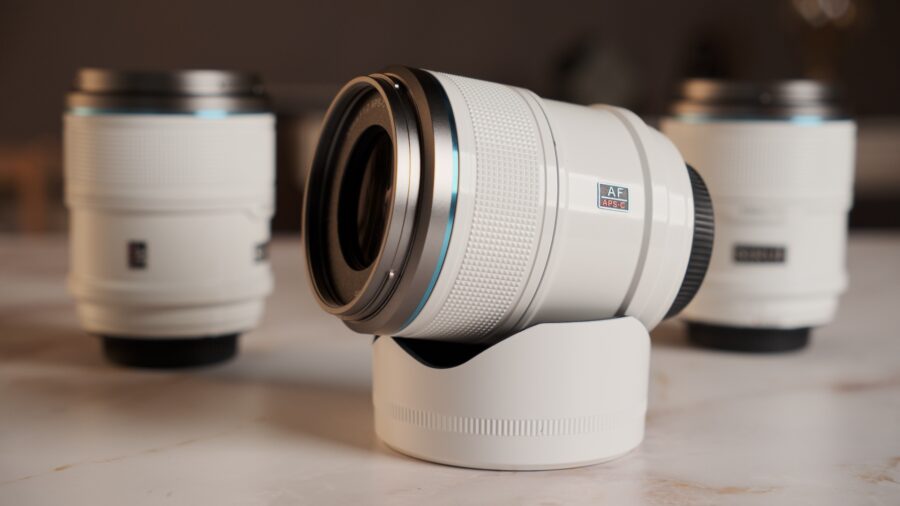
Conclusion
In all honesty, I’m a bit torn. The Sniper lenses from SIRUI are far from being optically perfect, yet, there is something in their images that is very engaging! (Call me a “romantic guy”, but that “creamy/dreamy” look when filming wide open is rather appealing). If communication between the camera and lenses can be improved, they can become a truly valid option in the creator’s arsenal as their price is hard to beat. The early bird price for each lens starts at $299, or $849 for the entire set of three lenses.
At the end of every crowdfunding-related article, we remind you to please be aware of the risks when backing a project on a crowdfunding platform. Also, please read the platform’s terms of use and remember there can be significant delays when delivering the product. Some projects don’t get delivered at all.
many thanks to the Pan Note Magic band and other artists for allowing me to film them.
What do you think about the new SIRUI Sniper lenses? Would you consider getting them? Yes/no, please share your thoughts with us in the comment section below.

![RED Nikon Z Mount Versions of the V-RAPTOR [X] and KOMODO-X Announced](https://www.cined.com/content/uploads/2025/02/RED-V-RAPTOR-X-KOMODO-X-Z-Mount-featured-370x230.jpeg)






















